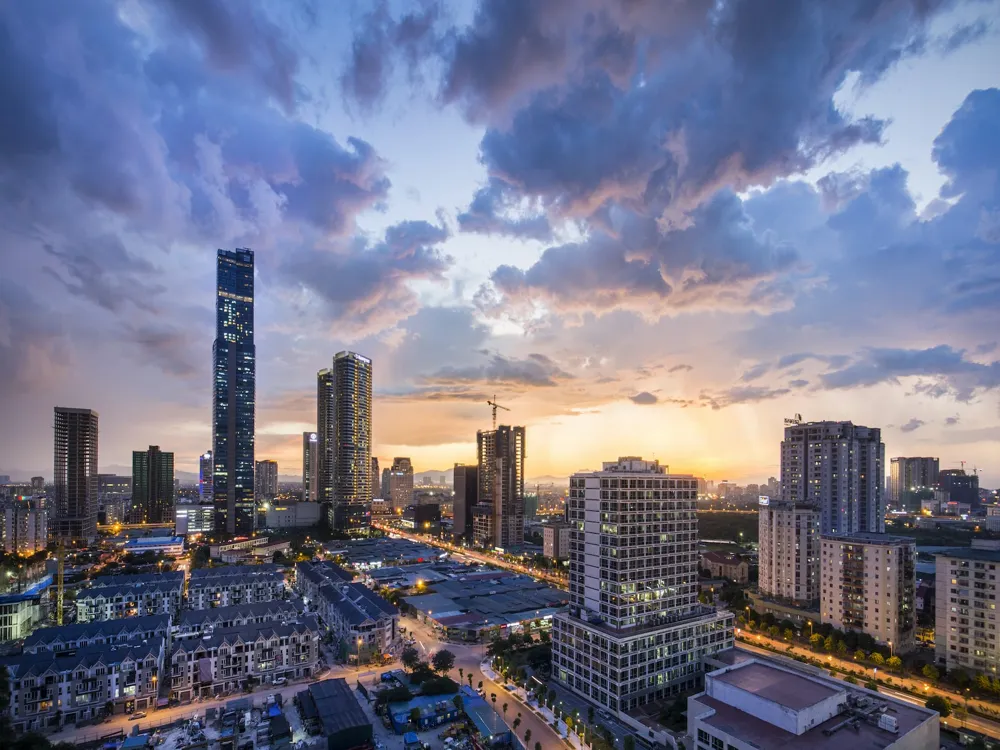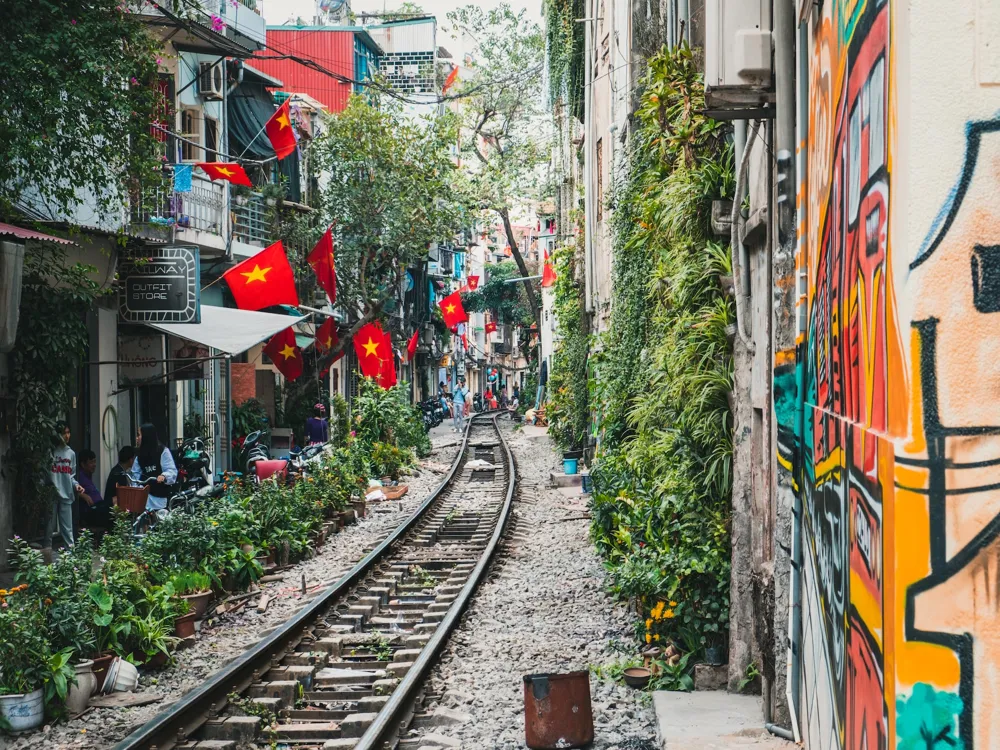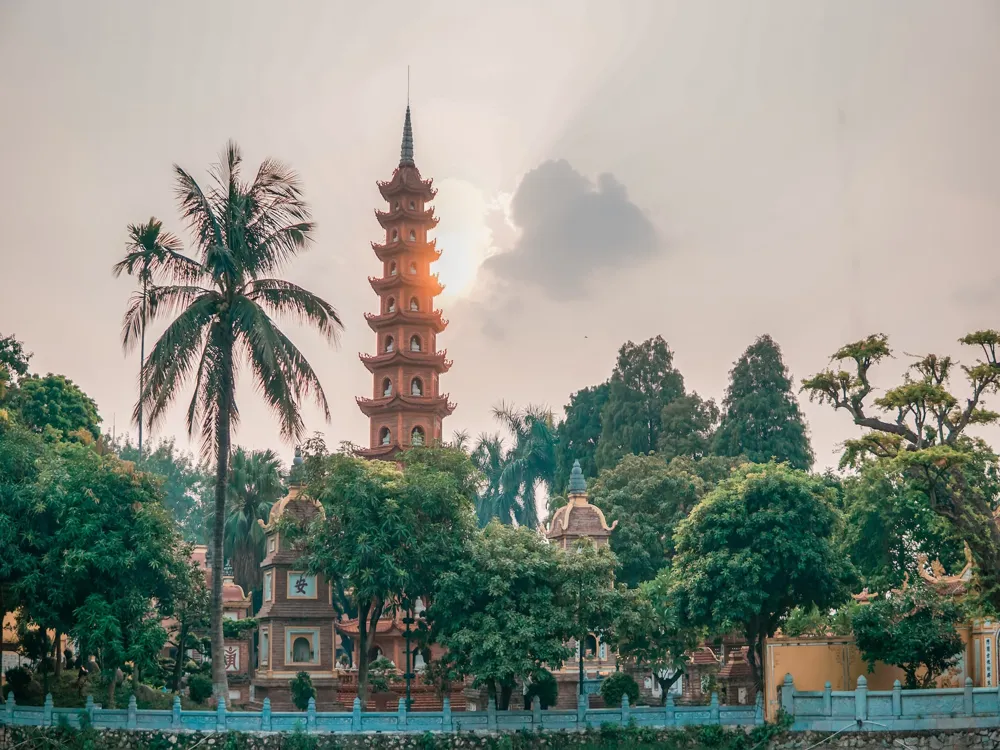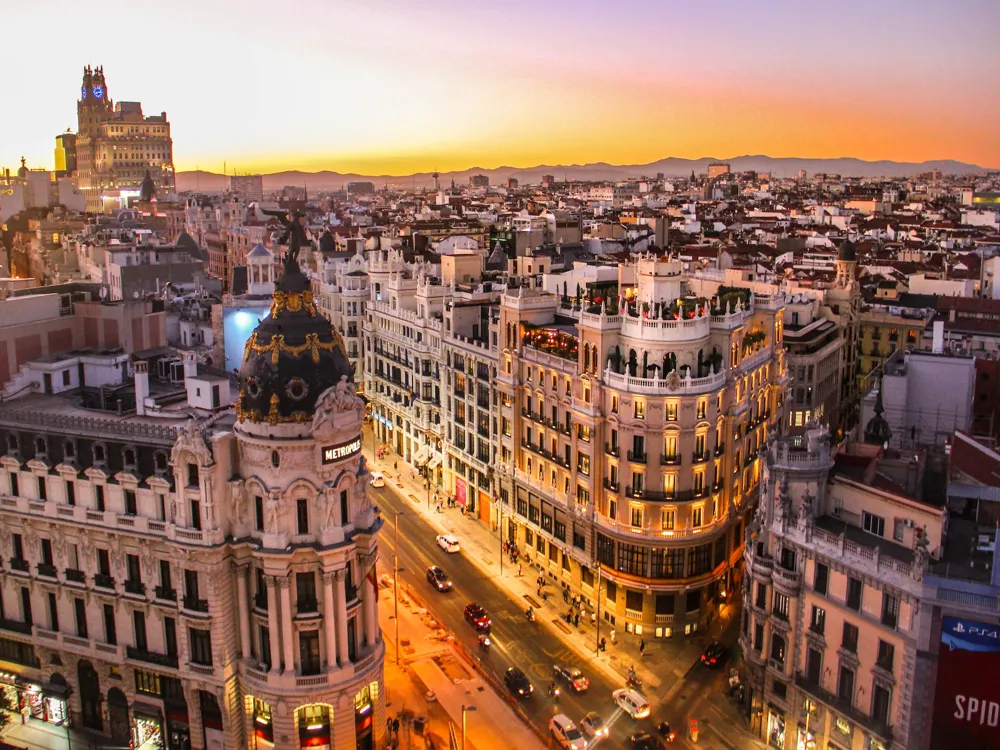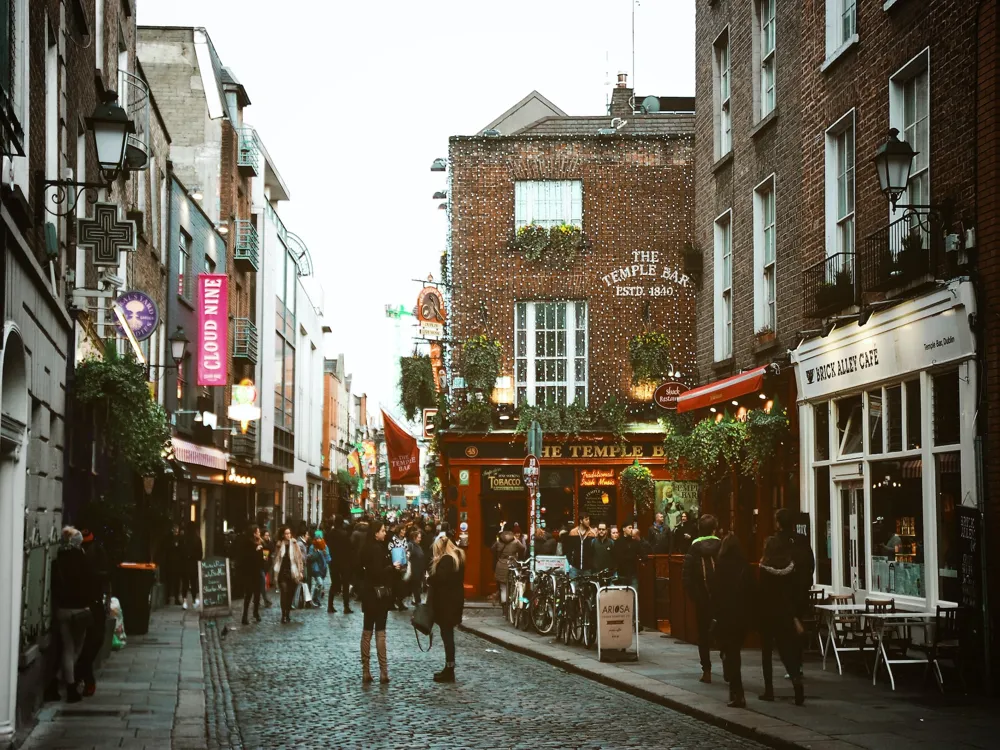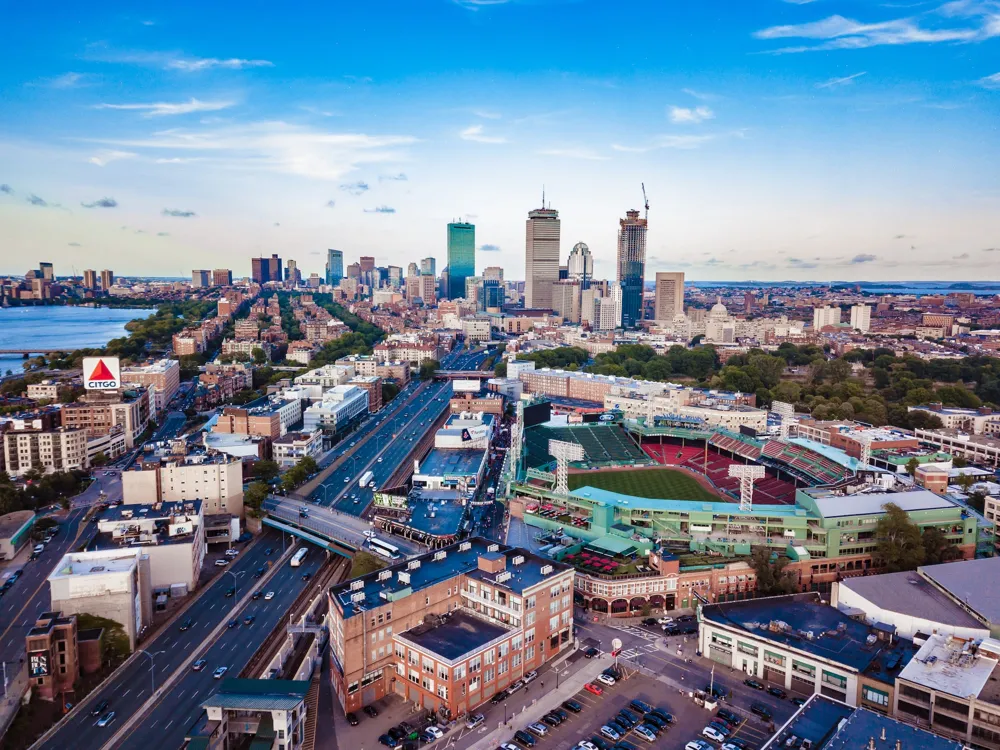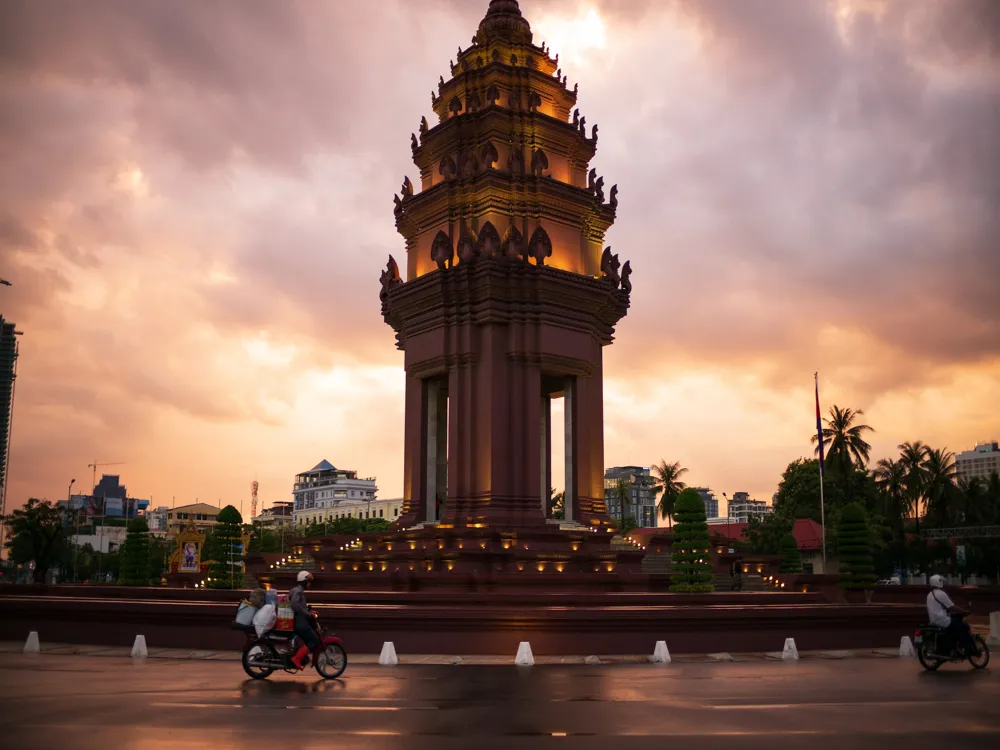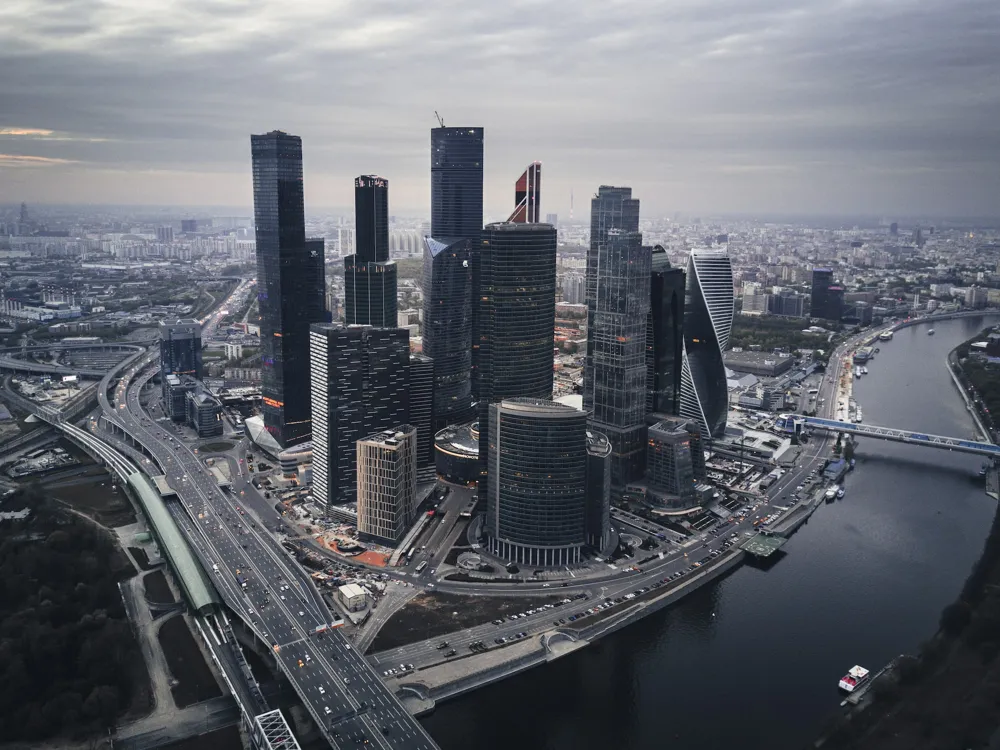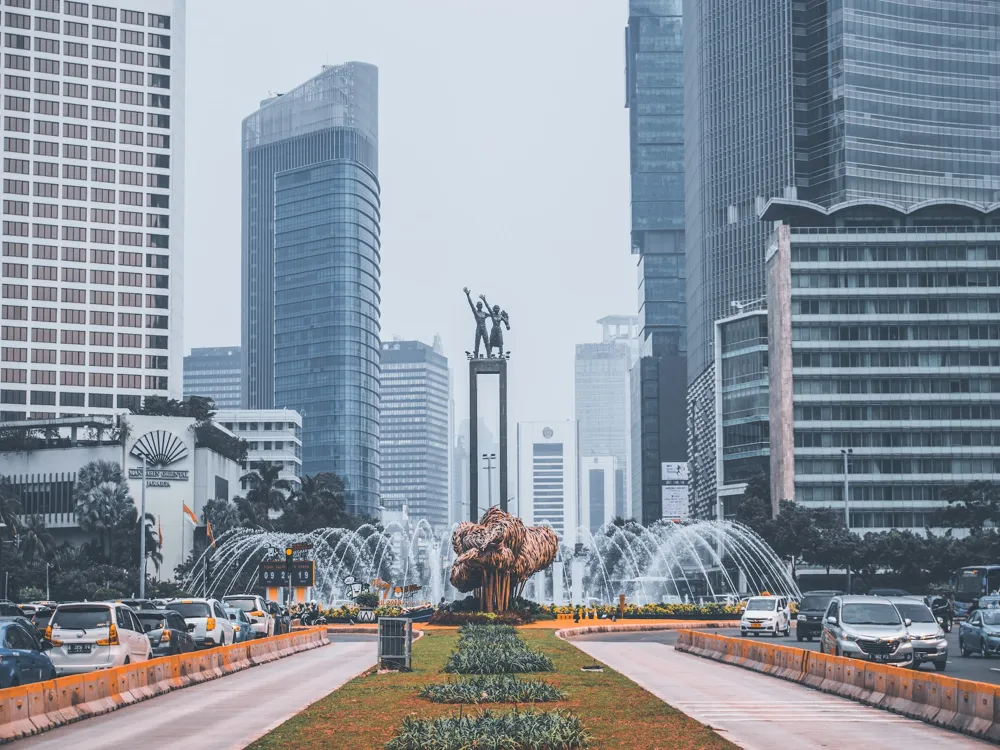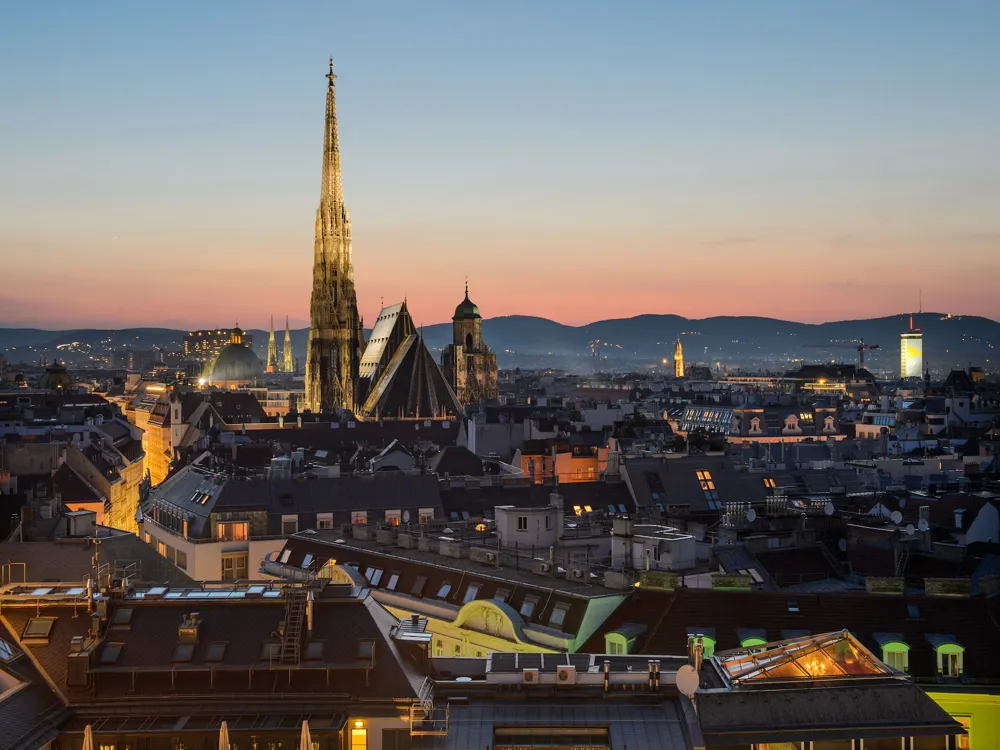Plan Your Travel To Hanoi
Places To Visit In Hanoi
Hanoi Night Market
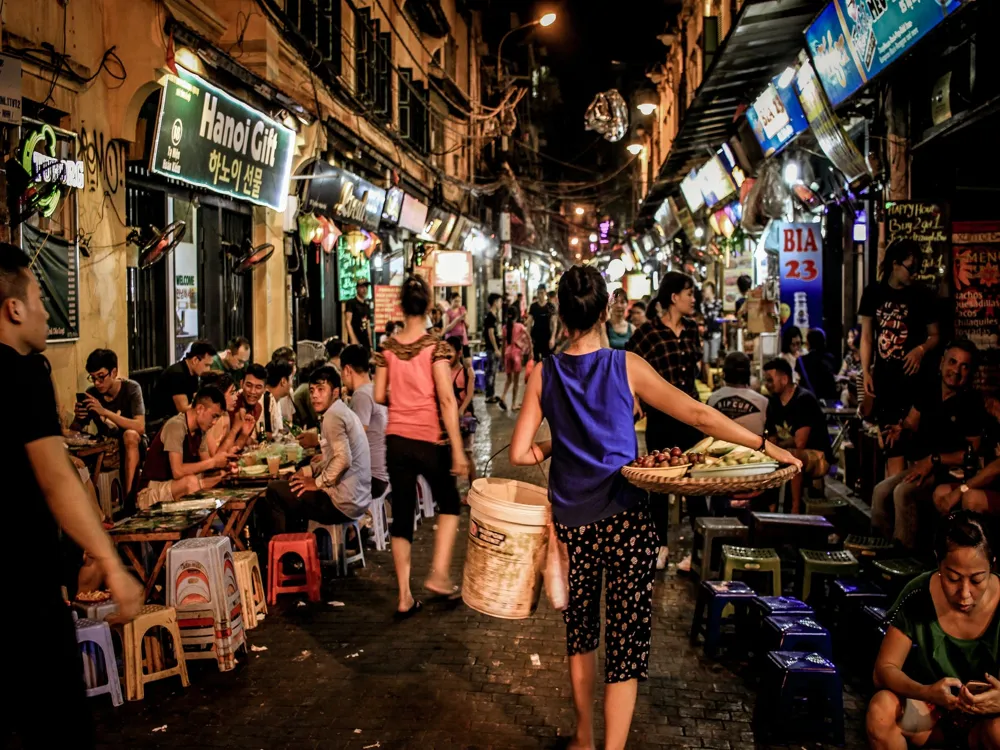
The Hanoi Night Market, located in the Old Quarter of Hanoi, is held every weekend. It is a lively gathering of roadside shopping kiosks and food stalls. Here, you can shop for clothes, handicrafts, accessories, and souvenirs or indulge in delicious and inexpensive Vietnamese dishes, such as bloating fern-shaped cake, Hai Phong bread, grilled sausages, and bacon.
Hanoi Night Market bridges the gap between locals and tourists by retaining the country's thousand-year-old culture and civilization. The market is a buzzing gathering of local food vendors and roadside stalls that attract a large number of tourists and locals. Historical sites and pedestrian streets within the area are illuminated with decorative lights, turning this spot into a travelling photographers' haven. It is here that you can taste several varieties of Vietnamese street food, enjoy cheerful cultural activities and buy diverse products and goods.
Read More
Hanoi Opera House
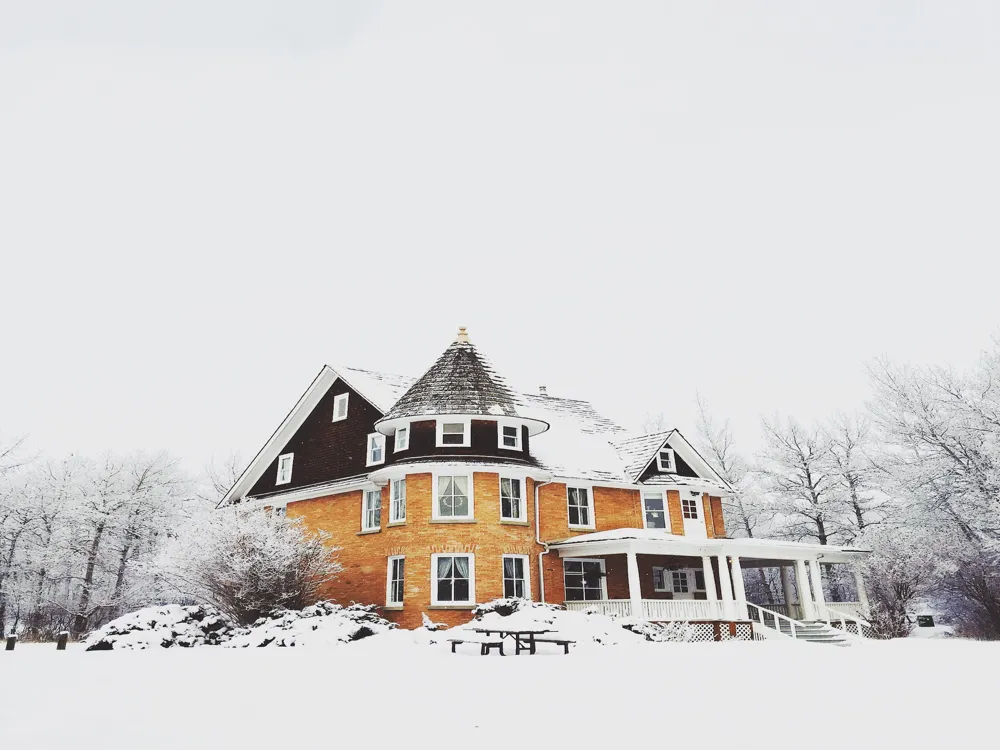
A reminder of the French colonial times, Hanoi Opera House stands proudly as one of the important historical landmarks of Hanoi. Modeled after the Palais Garnier in France, the yellow facade of the building will give you massive French vibes. While this magnificent building largely hosts opera shows, you can visit the building for its aesthetics and get many beautiful pictures clicked. You will find some professional photo shoots taking place with the building's architecture as its backdrop.
Mainly a monument designed for European culture, this attraction served as a center for theatre and classical music for the French colonial officials and their wives. This historic building has organized several musical performances and also important official conferences, and it continues to do so today. It was built in 1911 by the French and mimics the Paris Opera House in its structure and interiors. The people who have visited, often allude to the fact that it is even prettier than its Parisian counterpart.
Read More
Hanoi Police Museum
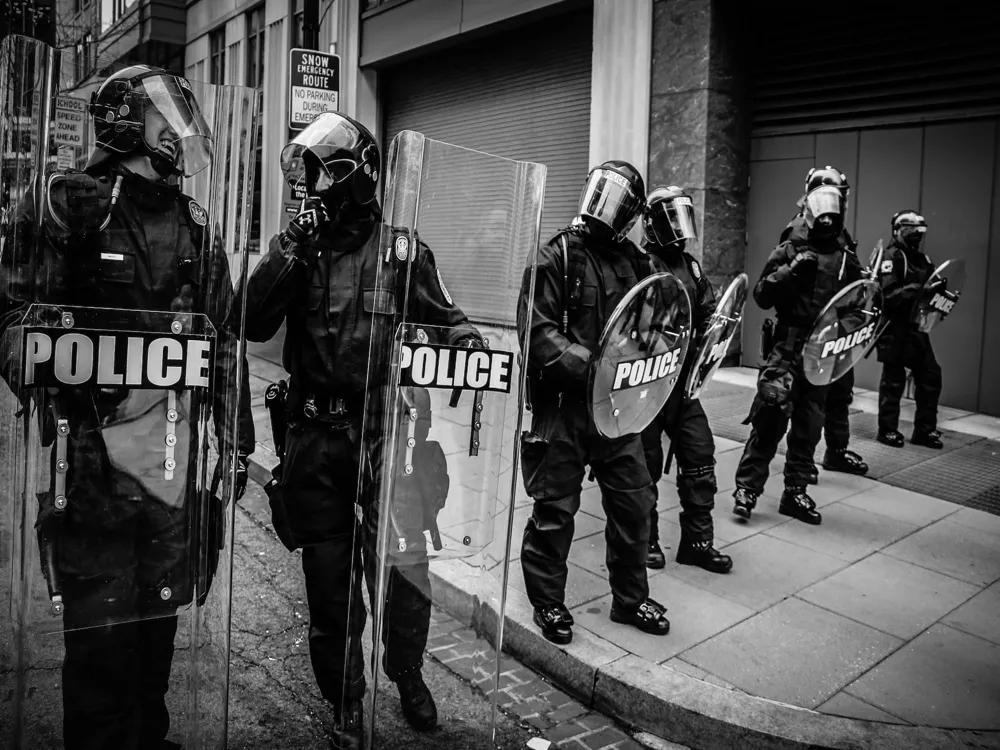
The Hanoi Police Museum exhibits fascinating items like uniforms, weapons, motorbikes, station dioramas and many photographs and documents taking the visitor through a chronological history of the police force. From their efforts to expel the French in 1946 till today while they fight drugs and cyber crime, it's all on display for the public.
The Hanoi Police Museum is a unique museum that takes you through the periodical history of Vietnam's much praised police force. The exhibits are lined with numerous photographs, newspaper cut outs, artefacts, brochures and everything that tells about the history of Vietnam's great police force. The beauty of the museum is enhanced by the various displays of the uniforms of the officers, their motorbikes and also models of the most important Generals.Sections of the Hanoi Police MuseumThe Hanoi Police Museum Depicts the Evolution of the Uniforms, Weapons, Gadgets and Vehicles of the Police Force of Hanoi (Source)The Hanoi Police Museum is spread over a generous area and is set with a modern ambience. The information and messages are printed in three languages: English, French and Vietnamese. In the first room, you will be encountering the weapons, tactics and the officers involved in driving out the "traitors" i.e. the French. This room take you back to the time between 1946 to 1954. The next room is one of the most important as it portrays the efforts of the police force and how they dealt with the horrific war-stricken situations during the Second Indochina War or popularly known as the Vietnam War. The artefacts of the room depict, how the police fought against the CIA force of America. This room dates back to 1954-1975. The room which denote the time period 1975-1986 showcases the police force's endeavours to uncover the forces which tried to devastate the social growth of Vietnam at that time. The last room 1986 - 2015, sketches the current scenario. The horrors of the 21st century that the police need to deal with. Beginning from cybercrime to drugs, unexpected murders, smuggling, adulteration and so on.How to Reach Hanoi Police MuseumThe Hanoi Police Museum is Located in Hoan Kiem District of Hanoi in Vietnam (Source)The Hanoi Police Museum is situated in Ly Thuong Kiet Street of the Hoan Kiem District in Hanoi. You can take a taxi or a grab car to the Museum. Also, the museum is quite accessible by walking or cycling as it is near to the city centre. If you opt for public transport, then take the 86CT bus from Ga Hanoi bus station to 54 Ly Thuong Kiet. This can also take you to the Vietnamese Women's Museum which is just three blocks away.Hanoi Police Museum in Hanoi, Vietnam (Source)The Hanoi Police Museum shows the evolution of Vietnam's Police force over years and decades. This creates a strong connection between the visitor and Vietnam's past battles. It also instils upon the locals a sense of true respect and devotion towards their police force.
Read More
Ho Chi Minh Museum, Hanoi
Opened in 1990 on the anniversary of Ho Chi Minh's birth, this Soviet-style museum is a mind-blowing museum depicting Vietnamese and Ho Chi Minh's history in a rather bizzare way. You can find lack and white photos, copies of speeches, letters, a huge statue of Ho Chi Minh himself, 1970-style art installations among many other exhibits.
The Ho Chi Minh Museum is hands down the one museum in Vietnam everyone must go to, conveniently located in the Ho Chi Minh complex. A majority of the funding, design and curation came from Soviet support. The same Soviet architects also designed the Ho Chi Minh Mausoleum next door. The museum contains many of Ho Chi Minh's personal effects, including clothing, his sandals and glasses, basically his entire life story, from his childhood to his political awakening, his efforts to end French colonial rule and most importantly, his leading of North Vietnam during the civil war, up to his death in 1969. His story is curated mainly through photographs which are conveniently captioned in both Vietnamese, English and French for tourists. The Ho Chi Minh Museum is Dedicated to the Life of Ho Chi Minh (Source)The museum covers Ho Chi Minh's life in 8 featured exhibitions. The first one, establishes his life as a child, his upbringing, hometown and youth. The second topic talks of the next ten years where he got on a French freighter as a stoker, and travelled the world. Here is where his search to end colonialism began. The next three topics, cover 1920 to 1945, and show how the man's founding principles were established through socialist policies and how he turned those ideals into the founding principles of Vietnamese Independence. From 1945 to 1969, which was the time-frame portrayed in topic 6 and 7, the national hero is shown in the height of his political career until his death. The Ho Chi Minh Museum is dedicated to the life and legacy of the former president of North Vietnam and to Vietnam's struggle for independence. A great place to learn about Vietnam's independence movement and the history of the communist state, the museum has the most massive and comprehensive collection on Ho Chi Minh's life and legacy in the whole of Vietnam. There are Many Document and Artifacts at the Ho Chi Minh Museum toLearn About Ho Chi Minh (Source) One can find thousands of documents, letters and historic artifacts and learn so much about the man who dedicated himself to freeing his country from French colonial rule. The museum is a collection of artifacts, miniatures and various gifts gathered nationally and internationally. There are guided tours available on request. Vietnam's museums are usually fairly literal in their narrative style. However, this one is more quirky, abstract, ambitious and international in its perspective. And it preserves a museum style that was developed in the final years of the Soviet Union.The Ho Chi Minh Museum in Hanoi is Inspired by the Life and Work of Ho Chi Minh (Source)Another important aspect of the museum is its structure which is unique since it was built as a monument as well as a museum. It is located at the birthplace of the Vietnamese communist state on Ba Dinh Square. A Soviet influence is obvious in the architecture of the building. The mausoleum next door contains the late leader's embalmed body. How to Reach Ho Chi Minh MuseumHo Chi Minh Museum is Located in Ba Dinh District of Hanoi in Vietnam (Source)The Ho Chi Minh Museum is located near Ba Dinh Square in Ba Dinh District f Hanoi. The square can easily be reached by bus or taxi from the center of Hanoi.Tips on Visiting Ho Chi Minh MuseumA local market exists in a small alley opposite the Ho Chi Minh Museum. There are a lot of food options on offer, from the famous Pho (Vietnamese noodles) and Che (Vietnamese pudding) to baguette and other local fares. Not only will you get a lunch deal, compared with what you would pay in the Old Quarter, but you will also have the unique chance to communicate with real locals.Book a tour at the entrance to the complex. Having a guide will help you to understand all exhibits in the museum, as some rooms contain information that is only in Vietnamese. End your tour by browsing galleries full of art made by some of Vietnam's leading artists. This museum can fit into a day trip to visit Ho Chi Minh mausoleum, One-pillar Pagoda, Ba Dinh square and the War Memorial all of which are located right next to each other.The Ho Chi Minh Museum in Hanoi, Vietnam (Source)The Ho Chi Minh Museum is a treasure trove for those interested in history or architecture. There are museums dedicated to Ho Chi Minh in every major city and town in Vietnam but none like this. Vietnam's museums are usually fairly literal in their narrative style. However, this one is more quirky, abstract, ambitious and international in its perspective. And it preserves a museum style that was developed in the final years of the Soviet Union. This might just be the most interesting museum in Vietnam!
Read More
Ho Chi Minh Mausoleum
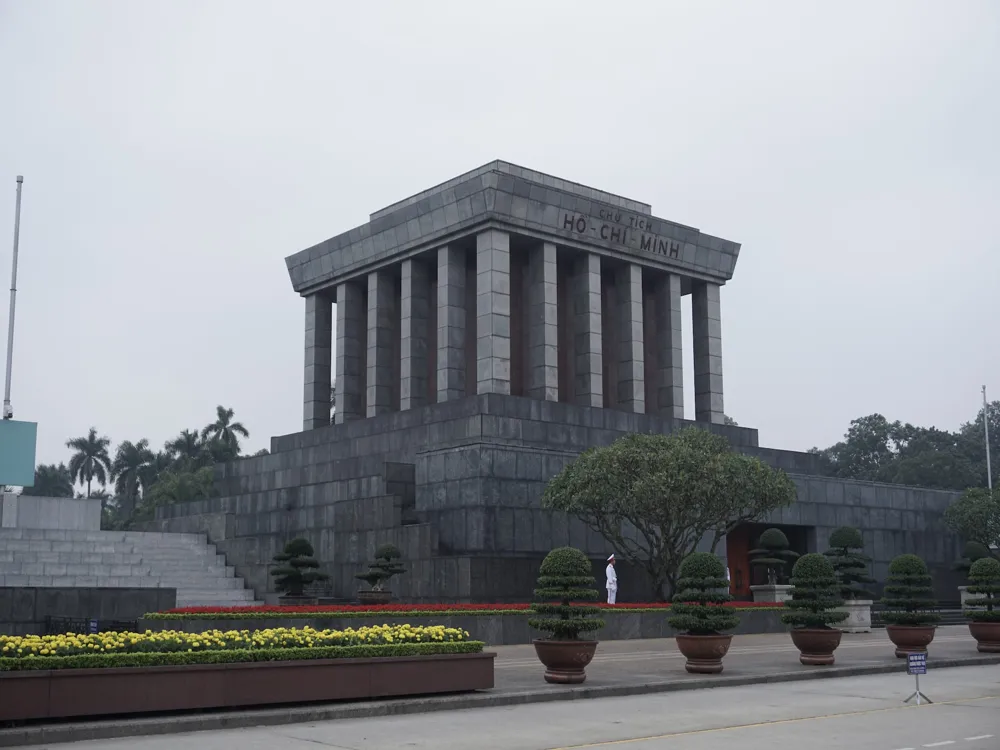
The Ho Chi Minh Mausoleum, located in Ba Dinh Square, is the final resting place of the most popular leader of Vietnam, Ho Chi Minh, known to his people as Uncle Ho. It is also where Uncle Ho read the Declaration of Independence on September 2nd, 1945. It was opened to the public in 1975. Visitors are allowed a short time to look at the casket.
The grey granite building of Ho Chi Minh Mausoleum is strictly guarded. The leader's body is preserved in a glass case in the mausoleum. Modeled on Lenin's mausoleum in Russia, the Ho Chi Minh Mausoleum is home to perfectly preserved remains of 'Uncle Ho' in a glass case, despite his will, which clearly stated that he wanted to be cremated. It's a must-visit for everyone planning a trip to Hanoi because it gives you a sense of the unique history of Vietnam and brings you up close to their greatest hero.
Read More
Ho Chi Minh's Stilt House
The humble abode of one of the most important political figures in Vietnamese history, President Ho Chi Minh's Stilt house is a must-visit while visiting Hanoi. The two-bedroom house is surrounded by a carp pond, and still contains his personal typewriter and armchair. Its sparse furnishings are an ode to the simplicity of the man who lived there.
Ho Chi Minh's Stilt House is built over stilts and mere wooden planks, where the founding father of Vietnam, Ho Chi Minh, popularly known to the people of Vietnam as 'Uncle Ho' resided from 1958 until his death till 1969. Uncle Ho rejected the grandeur of the Presidential Palace and instead decided to settle in a small, wooden, stilt house behind the palace. The house is built in a niche of the presidential palace and is surrounded by a beautiful carp pond, filled with freshwater life since the time of Uncle Ho. There is also a radiant garden full of Uncle Ho's favourite flowers and fruits like hibiscus, willows, flame tree and frangipani. One can reach the garden through a low gate covered with climbing plants. SourceThe place has been well-maintained, matching the same conditions as Uncle Ho left it. The stilt house provides wonderful views through its airy doors and windows. The 'Mango Alley' is a 300-foot long road that takes you to the stilt house from the Presidential Palace visitors' ground in Hung Vuong Street. The alley is lined by numerous mango trees, giving it its name.President Ho Chi Minh Lived in the Ho Chi Minh Stilt House Till the Day he Died (Source)Ho Chi Minh's Stilt House consists of two small rooms, of which one was Ho Chi Minh's study and another was his bedroom. The rooms are barred; thus, you cannot enter but can be observed from the exterior walkway. They contain some of his artefacts and gifts from foreign leaders. A path leads to the back of the house, where the two rooms can be reached using stairs. Both the rooms are small, with an area of hardly about a hundred square feet each, and contain minimum personal belongings of Ho Chi Minh. The study is furnished with Ho Chi Minh's typewriter, newspapers of that time, books, and an electric fan donated by Japanese communists. The bedroom contains a bed, an antique telephone, electric clock, and a radio donated by expatriate Vietnamese in Thailand.The Space Underneath Ho Chi Minh's Stilt House was Used to Entertain Guests (Source)There is an empty space beneath the Ho Chi Minh's Stilt House which Uncle Ho used for parties and entertaining foreign delegates. Party officials, Generals and Foreign dignitaries would visit Ho Chi Minh in this area and sit on simple bamboo and wooden chairs. One corner of this space has a rattan armchair, which was the President's favourite resting spot where he would read and relax.How to Reach Ho Chi Minh's Stilt HouseHo Chi Minh's Stilt House is Located in the Garden of the Presidential Palace in Hanoi (Source)The Ho Chi Minh Stilt House is a part of the Ho chi Minh complex located within the garden of the presidential palace, situated on Hung Vuong street in Ba Dinh District of Hanoi, Vietnam. Parking is available at the entrance gate of the Ho Chi Minh Museum, for those who opt for private vehicle or taxi.However, buses are more convenient and economical. Bus no. 9, 34, 22 all stop at the Le Hong Phong, which is less than a minute walk from the Ho Chi Minh Complex.Ho Chi Minh Stilt House in Hanoi, Vietnam (Source)Ho Chi Minh's Stilt House not only depicts Vietnam's war-stricken past but also takes you away from the hustle and bustle of the city into a serene yet humble place where Vietnam's first president resided. Visitors are often left jaw dropped once they come to know how simply Uncle Ho, the president, stayed in that quaint house. He lived for his countrymen, shared their struggle and tried to experience their daily dwellings. This is must visit to know about Uncle Ho and his deeds.
Read More
Ho Tay Water Park

Located inside the amusement park of West Lake Park, the Ho Tay Water Park is one of the most amazing attractions in Hanoi. Visitors can seek an adrenaline rush from the various high-speed slides and diving pool or just laze around in the pool and lazy river. It's the perfect place for couples, friends and families with children for some amusement and grabbing a bite at the fast food joints.
Ho Tay Water Park is a splendid water park located inside West Lake. This water park is perfect to seek solace from the torrid heat of Vietnam and enjoy some wholesome family fun. It is equipped with all modern amenities and a wide range of thrilling rides, including seven sliding lanes with a height of 12 meters, a pool that produces high waves similar to the gigantic waves of the sea, a Tibetan suspension bridge, thrilling swinging ropes and a diving pool where you can dive using springboards. If the adventurous rides make you feel tired, a massage pool is also located in the water park that will make you feel relaxed. Special pools and water slides have been designed for children in the water park, keeping their safety in mind where they can enjoy to the fullest. Replete with fun filled activities, Ho Tay Water Park is popular not only among travelers but locals too. The Ho Tay Water Park is a Popular Place Among Locals and Tourists of Hanoi (Source)Adjacent to the Ho Tay Water Park, Moon Park is located that has a 60 meter high swing which provides panoramic and picturesque views of Hanoi. Moon park is famous for its 3D cinema, electronic games, and supermarket. A sports complex is also located here where people can indulge in a game of golf, tennis, badminton, ping-pong, and billiards. A small pond full of colourful fishes is the highlight of this park where you can indulge in fishing. A thrilling roller coaster, huge Ferris wheel and bumping cars will also entice you to take a ride. All in all, Ho Tay Water Park is a perfect place to spend some quality time with your loved ones creating beautiful memories.How to Reach Ho Tay Water ParkThe Ho Tay Water Park is Located near West Lake in Tay Ho District of Hanoi, Vietnam (Source)Ho Tay Water Park is located by the border of West Lake in Tay Ho District at a distance of 7 km from the centre of Hanoi. It can be easily reached by hiring a taxi. From Hanoi Old Quarter, this water park is located 5 km away from where you can hail a taxi that will drop you off here. The closest bus stop is the Cong Vien Nuoc Ho Tay, specifically meant for the water park, accessible by bus line 13.Ho Tay Water Park is One of the Best Water Parks in Hanoi, Vietnam (Source)Ho Tay Water Park is among the best amusement parks in Hanoi where you can enjoy some of the most thrilling water as well as land rides. This water park is a must visit to enjoy, relax and spend some time away from the hustle bustle of the city.
Read More
Hoa Lo Prison Museum
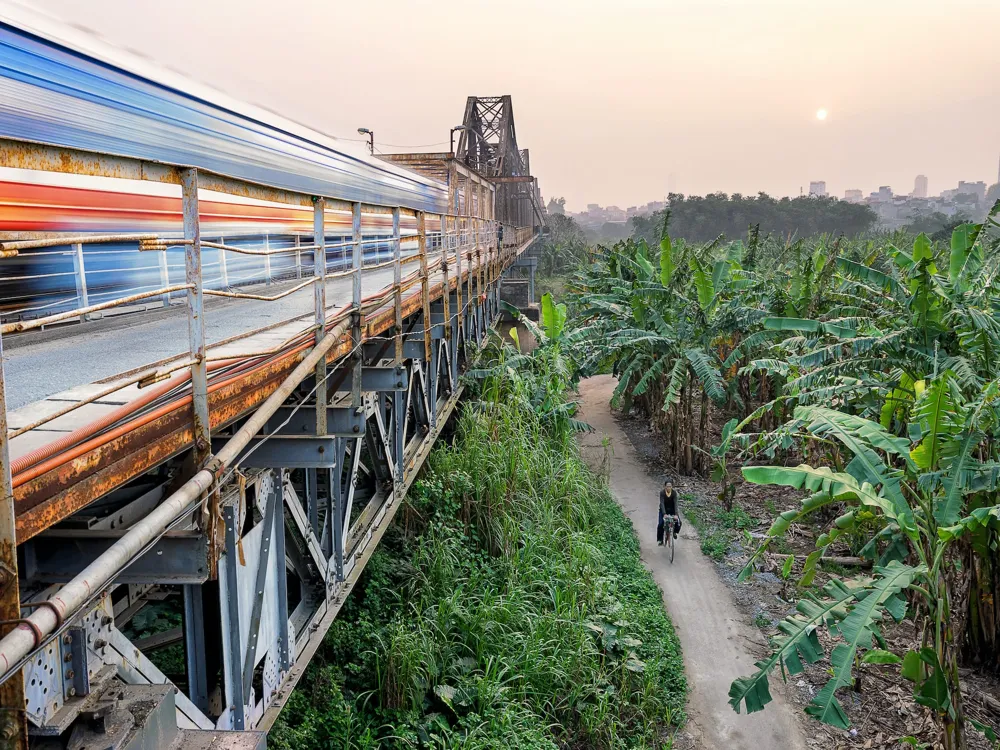
Hoa Lo Museum is all that remains of the Hoa Lo Prison, which was used to capture Vietnamese and American political prisoners during the colonial period and the Vietnam war. Also known as Hanoi Hilton, it is located in the Hoan Kiem area. The interrogation room, guillotine, and John McCain's suit all are on display, a silent reminder of the gruesome past Vietnam has had to witness.
Once a fearsome prison used to suppress voices of dissent, Hoa La Prison was built by the French during the colonial era. It was first used to house Vietnamese revolutionaries opposing French rule and was later used for prisoners of war during the Vietnam War. It is sarcastically known as 'Hanoi Hilton' for its brutal living conditions. Today, most of the prison has been razed to the ground, but a small section remains that has become a museum. The Hoa Lo Prison was built with 13 feet high stone walls that are over two feet thick. These walls were topped with high-voltage electric wires and shards of glass. The imposing iron doors were constructed in France, and then shipped to Vietnam. It was kept after independence for its historical significance, but in time, it became used by the Vietnamese for the very purpose it was built against them. Of course, Hoa La was not a successful prison - hundreds managed to escape over the years, especially through its sewage grates under the ground.The Hoa Lo Prison museum that stands there today attempts to recreate the living conditions of the colonial era and the Vietnam War. Many believe that it has been 'whitewashed' to appear less brutal than it was. Whatever the case, it is open to the public through tours, so we'll let you decide how you feel about the prison! Over the years, Hoa La prison became home to many prominent soldiers. Some noteworthy names include: William Lawrence, a US Navy pilot and future Superintendent of the US Naval Academy, James Stockdale, a US Navy pilot, Medal of Honour recipient and the 1992 Vice-Presidential candidate, and Sam Johnston, a future Republican Congressman of Texas. One of the most famous prisoners of Hoa La Prison was John McCain, a US Navy pilot and 2008 Presidential nominee. Decades after the war, McCain returned to the prison, advocating better relations with the U.S. and Vietnam.
Read More
Hoan Kiem Lake
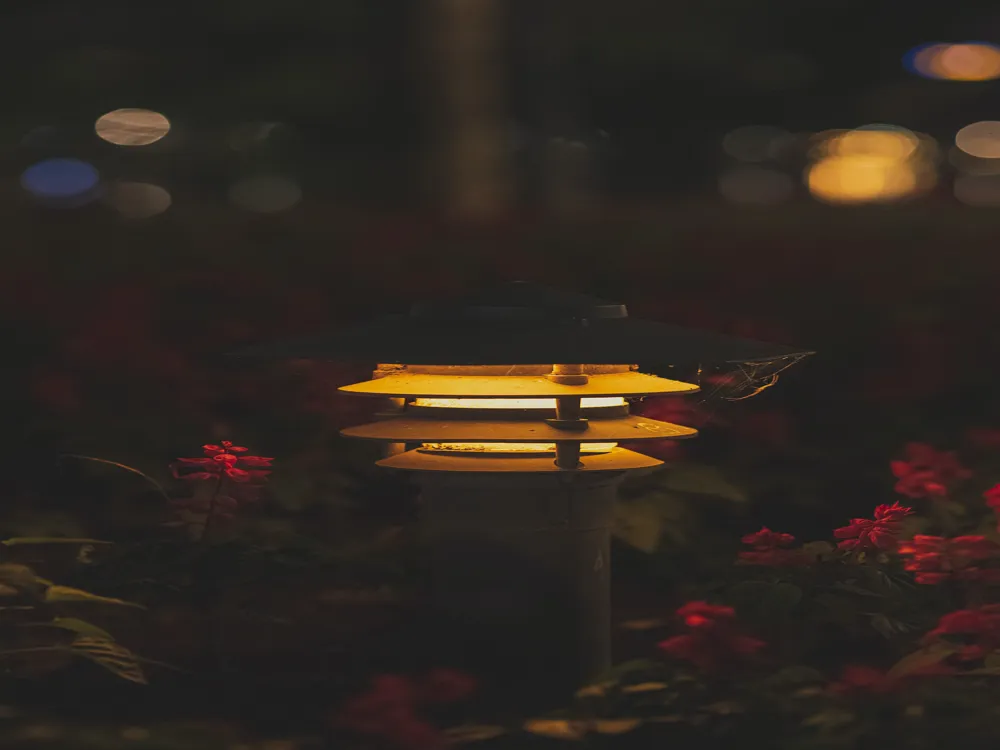
Hoan Kiem Lake, or Turtle Lake, is a serene spot in Hanoi, ideal for unwinding after a long day. Surrounding the Ngoc Son Temple, with its iconic red bridge, it paints a pretty picture. On the northern shore is a small island where the Ngoc Son temple is located. The lake is also home to an iconic tortoise which is a sacred animal in Hanoi.
Located close to the Old Quarter, the lake is bursting with life early morning and late evening, when people can be seen exercising, casually hanging out, or even practicing tai chi and line dance. Elderly and children alike are seen enjoying themselves, and the lake also has a local legend full of royalty, treasure, and swords. The refreshing surroundings qualify as the best place for morning and evening walks. If you make it early, at around 6 in the morning, you can catch locals practising tai chi by the banks. On Fridays and Saturdays, the nearby traffic is ousted from 7 pm until midnight, giving way to a fresher vibe to take over the entire lakeside.
Read More
Huu Tiep Lake and the Downed B-52

In the 1972 campaign 'Hanoi-Dien Bien Phu in the air', the Vietnamese Air Defense Force shot down 81 American aircrafts, one of them being 34 B52. One part of the aircraft fell down in the Huu Tiep Lake of Hanoi. Today, many tourists visit this lake to catch a glimpse of the wreckage including the gear wheels, which now has plants growing around it.
Huu Tiep Lake is a war memorial located in Hanoi. Popularly known as B-52 lake, it features a US B-52 bomber that was shot down on the night of 27 December 1972 during the Vietnam War. The wrecked bomber in the algae-green water is a symbol of Vietnam's victory over the United States. It is also a constant reminder of the violence and the endless number of people who lost their lives during the war. An inscription near the lake with the words: "outstanding feat of arm that brought down the bomber of the US imperialist" celebrates the courage and determination of Vietnam that led to its victory.How to Reach Huu Tiep LakeHuu Tiep Lake is Located in the Ba Dinh District of Hanoi in Vietnam (Source)Huu Tiep Lake is located in the Ba Dinh District, down the road from the Ho Chi Minh Museum. You can reach here by either hiring a tuk-tuk or taxi from any part of Hanoi. The closest bus stop is the Ngoc Ha Bus Stop, accessible by Bus Line 9, from where it will take you a ten-minute walk to reach the lake.Huu Tiep Lak and the Downed B-52 Bomber in Hanoi, Vietnam (Source)Huu Tiep Lake proudly depicts the crashed US bomber as a symbol of triumph of the Vietnamese people. This small lake holds a special place in the hearts of people and induces the feeling of patriotism in them.
Read More
Hanoi Travel Packages
View All Travel Packages Hanoi
Nearby Places Hanoi
Browse Package Collections
Browse Hotel Collections









